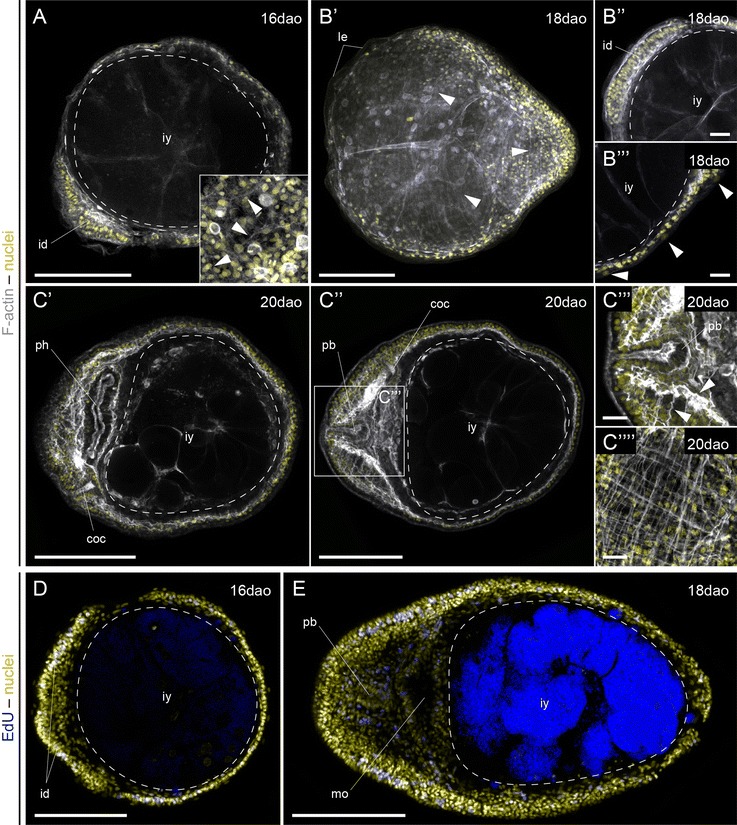Fig. 5.

Metamorphosis of the Schmidt’s larva of Lineus ruber. A–E z projections of confocal scans of larvae and early juvenile labeled against F-actin (gray A–C′′′′) and incorporated EdU (blue D, E) counterstained with the nuclear marker Sytox Green (yellow) at 16, 18 and 20 days after oviposition (dao). A Larvae at 16 days of development are rounded and show the first signs of cell differentiation (arrowheads in the inset mark F-actin projections). B′–B′′′ After 18 days of development, the larvae are more elongated along the anteroposterior axis, and circular and longitudinal fibers extend below the epidermis (arrowheads B′). The imaginal discs are more developed (B′′) and the larval epidermis is only present in some parts (arrowheads B′′′). C′–C′′′′ After 20 days of development, the imaginal discs have formed the basic anatomical features of the juvenile. The rhynchocoel occupies the central region of the head, and the mouth opening occupies the antero-ventral side of the animal. The musculature is now much more developed, in particular in the head region around the developing brain lobes (arrowheads C′′′) and in the body wall (C′′′′). D, E During metamorphosis of the Schmidt’s larva into the juvenile, proliferation is widespread, although more concentrated in the anterior imaginal discs at early stages (D) and in the lateral sides of the head in the early juvenile (E). A is a lateral view, with the dorsal side to the top. The rest of the panels are ventral views. In all panels, anterior is to the left. In D, E the blue staining in the ingested yolk is background. coc cerebral organ canals, id imaginal disc, iy ingested yolk, le larval epidermis, mo mouth, ph pharynx, pb proboscis. Scale bars (A, B′, C′, C′′, D, E) 100 μm; (B′′, B′′′, C′′′, C′′′′) 25 μm
